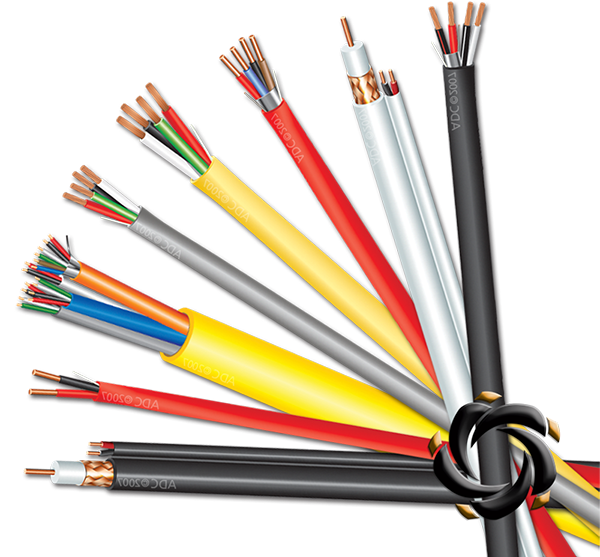The 540 Series Trunk and Distribution Cable is equipped with a combination of foil and braided shielding, which acts as an effective barrier against electromagnetic interference (EMI). External electrical signals, including noise from nearby power lines, motors, or other electronic devices, can degrade the quality of the transmitted signal if not properly managed. By incorporating these shielding methods, the cable is able to significantly reduce the impact of EMI. The foil shield covers individual conductors or pairs of wires, while the braided shield envelops the entire cable, providing a high level of protection. This shielding not only prevents external interference from corrupting the signal but also reduces the amount of radio frequency interference (RFI), ensuring a cleaner signal path.
The common design element of the 540 Series Trunk and Distribution Cable is the use of twisted pair construction, where pairs of conductors are twisted together along the cable length. This twisting helps to cancel out the effects of electromagnetic interference. When the wires are twisted, any external interference that affects one wire of the pair will induce an opposite signal in the other wire, effectively neutralizing the impact of the interference. This design is especially important in applications where crosstalk between conductors or noise from external sources might otherwise compromise the integrity of the transmitted signal. Twisted pairs also offer better signal-to-noise ratios, making them highly effective at maintaining signal clarity even in challenging environments.
The 540 Series Trunk and Distribution Cable is constructed with high-quality insulation materials such as polyethylene, PVC, or other specialized polymers. The insulation serves two key purposes: it protects the individual conductors from damage, and it also prevents the signal from degrading due to environmental factors like moisture or physical stress. The insulation works in tandem with the shielding to ensure that the signals remain strong and undistorted throughout their transmission. The insulation materials are often chosen for their low dielectric constants, which help in minimizing signal loss and improving overall performance, especially when transmitting high-frequency data.
Signal attenuation refers to the reduction in signal strength as it travels through the cable. The 540 Series Trunk and Distribution Cable is engineered to minimize attenuation by using high-conductivity materials like copper for its internal conductors. Copper has excellent electrical conductivity, meaning that the signal encounters less resistance and retains its strength over long distances. This capability is crucial for ensuring that data can travel through the cable without significant degradation, particularly in long-distance trunk and distribution applications, where maintaining signal quality is essential for reliable communication and data transmission.
In many models of the 540 Series Trunk and Distribution Cable, the internal conductors are stranded rather than solid. Stranded conductors are made up of multiple thin wires twisted together, which offers greater flexibility compared to solid conductors. This flexibility is particularly beneficial in installations where the cable needs to be bent or routed through tight spaces, such as in walls or conduit systems. The design also reduces the likelihood of signal degradation due to stress or bending, as the cable is more adaptable to movement without damaging the internal wiring. Stranded conductors provide better vibration resistance, which is particularly useful in industrial or mobile environments where the cable may be subject to mechanical movement.
















